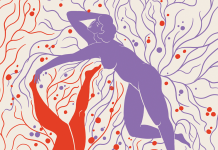
Photo by Tonya Sutfin
The news hit me hard that Friday morning in June. I was in the office editing some stories for this appropriately themed health care-focused issue when I started getting texts from friends and family, social media alerts, and, gratefully, hugs from co-workers, as we all learned Roe v. Wade, the U.S. Supreme Court decision that women have the constitutional right to an abortion, had been overturned.
I was stunned. I suspected it would happen based on the early-May leak of the court’s draft, but I held out hope the 50-year-old precedent would stand. I had adopted a “let’s wait and see” approach, had hedged my bets, and miserably learned I was wrong.
They say grief comes in waves, and I definitely felt grief that Friday morning, throughout the following weekend, and many times since. I’ve watched how people across the country have reacted, some joyously, some angrily. There have been marches, gatherings, and protests that continue into this election season.
Grief and anxiety can also motivate people, and we wanted to do something—anything—to help make the news a little less shocking. So, we got to work. We posted on our social media channels. We researched and wrote a comprehensive story online about Minnesota’s role and next steps. We identified doctors who may be major players in the state’s services. We set up interviews for upcoming impact stories. And we finalized those stories for this Top Doctors issue—because abortion is health care but also, now, not available to many women who may need it.






